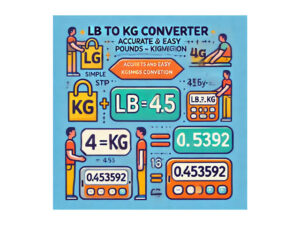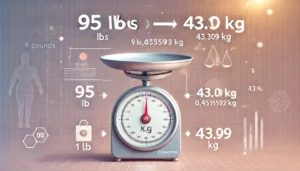Introduction: Why Convert 99.9°F to Celsius?
Ever wondered what 99.9°F means in Celsius? Maybe you’re checking your body temperature, looking at a weather forecast, or following a recipe with international measurements. Whatever the reason, knowing how to convert Fahrenheit to Celsius is a handy skill.
In this blog post, we’ll break down the conversion process, explain why Fahrenheit and Celsius exist, and show you when it’s useful to convert temperatures. We’ll also keep it super simple—no complicated formulas or technical jargon!
How to Convert 99.9°F to Celsius
The formula to convert Fahrenheit to Celsius is: C=(F−32)×59C = \frac{(F – 32) \times 5}{9}C=9(F−32)×5
Now, let’s apply it to 99.9°F: C=(99.9−32)×59C = \frac{(99.9 – 32) \times 5}{9}C=9(99.9−32)×5 C=67.9×59C = \frac{67.9 \times 5}{9}C=967.9×5 C=339.59C = \frac{339.5}{9}C=9339.5 C≈37.7C \approx 37.7C≈37.7
So, 99.9°F is approximately 37.7°C.
Why Does Temperature Conversion Matter?
1. Checking Body Temperature
If you’re using a thermometer and it reads 99.9°F, you might wonder if that’s a fever.
- Normal body temperature: Around 98.6°F (37°C)
- Low-grade fever: 99°F – 100.4°F (37.2°C – 38°C)
- High fever: Above 100.4°F (38°C)
A reading of 99.9°F (37.7°C) is slightly above normal but still considered a low-grade fever.
2. Understanding Weather Reports
If you’re traveling between countries that use different temperature scales, conversions help you dress appropriately.
For example:
- 99.9°F weather? That’s a scorching 37.7°C—better pack your sunscreen! ☀️🔥
3. Cooking & Baking
Some recipes, especially from the U.S., use Fahrenheit, while others (like those from Europe) use Celsius.
If a recipe says “Bake at 99.9°F”, you might need to double-check—most baking recipes use much higher temperatures!
Fahrenheit vs. Celsius: Why Two Systems?
- Fahrenheit (°F) is mainly used in the United States, Bahamas, Belize, and a few other places.
- Celsius (°C) is the global standard, used in most of the world, including Europe, Asia, and Australia.
Celsius is based on water’s freezing (0°C) and boiling points (100°C), making it easier to understand. Fahrenheit, on the other hand, was designed with human body temperature (98.6°F) in mind.
Quick Temperature Conversion Chart
For a fast reference, here are some common Fahrenheit-to-Celsius conversions:
| Fahrenheit (°F) | Celsius (°C) |
|---|---|
| 32°F (Freezing) | 0°C |
| 50°F | 10°C |
| 75°F | 24°C |
| 99.9°F | 37.7°C |
| 100°F | 37.8°C |
| 104°F (Fever) | 40°C |
How to Convert Quickly Without a Calculator
If you don’t have a calculator, you can estimate using this trick:
- Subtract 30 from the Fahrenheit temperature.
- Divide by 2 to get an approximate Celsius value.
For 99.9°F:
- 99.9 – 30 = 69.9
- 69.9 ÷ 2 ≈ 35°C (close enough for rough estimates!)
Conclusion
Converting 99.9f to c is simple when you know the formula. Whether you’re checking a fever, planning a trip, or following a recipe, understanding temperature differences can make life easier.
Now you know that 99.9°F = 37.7°C, and you’re all set to impress your friends with your conversion skills! 🎉
FAQs
1. Is 99.9°F a fever?
Yes, 99.9°F (37.7°C) is considered a low-grade fever. However, it’s not usually a cause for concern unless it goes higher.
2. How do I convert Fahrenheit to Celsius without a formula?
A quick trick:
- Subtract 30 from Fahrenheit.
- Divide the result by 2. It’s not exact, but it’s close enough for everyday use!
3. Why does the U.S. use Fahrenheit instead of Celsius?
The U.S. stuck with Fahrenheit because it was already widely used before the metric system became popular. Changing would be expensive and confusing for many people.
4. What is normal body temperature in Celsius?
The average body temperature is 37°C (98.6°F), but it can range from 36.1°C to 37.2°C (97°F to 99°F).
5. What’s the easiest way to remember the conversion formula?
Think of the number 32 as the “Fahrenheit offset” and remember: (F−32)×5÷9=C(F – 32) \times 5 \div 9 = C(F−32)×5÷9=C
Or use the quick trick: Subtract 30, divide by 2!





